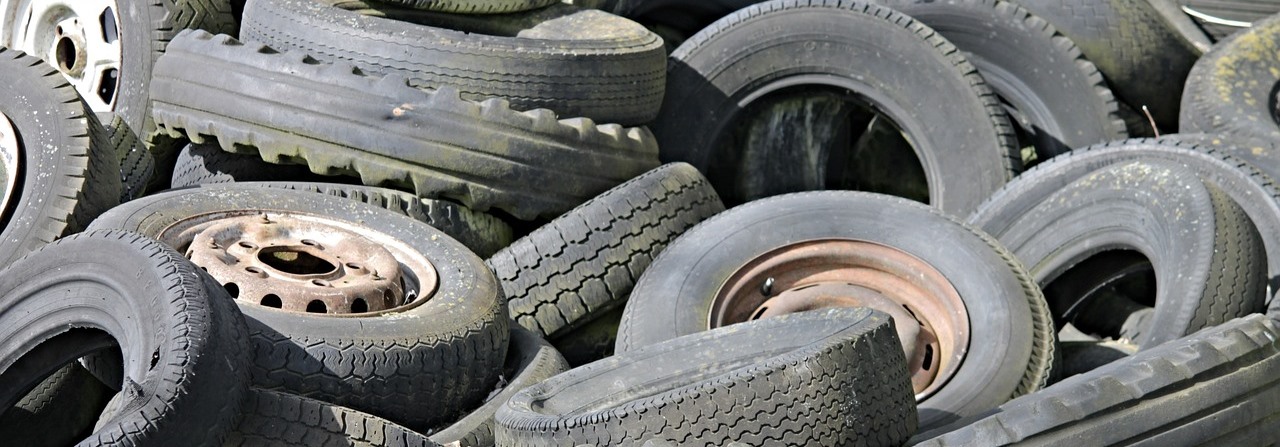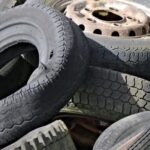
14 Sep Car Tires: 7 Signs It’s Time to Replace Them
 Your vehicle’s tires ensure your safety and provide optimal road performance. Over time, tires wear down, and you will need to replace them. But how do you know when to invest in a new set of tires? Signs that indicate it’s time to replace your tires include low tread depth, uneven tread wear, and poor fuel efficiency.
Your vehicle’s tires ensure your safety and provide optimal road performance. Over time, tires wear down, and you will need to replace them. But how do you know when to invest in a new set of tires? Signs that indicate it’s time to replace your tires include low tread depth, uneven tread wear, and poor fuel efficiency.
1) Worn Tires Tread Depth
Tread depth is an excellent indication of tire wear. As tires age, the tread depth decreases, reducing traction and handling. An easy way to check the tread depth is by using the “penny test.” Insert a penny into the tread groove with Lincoln’s head pointing down. If you can see the top of Lincoln’s head, your tread depth is too shallow, and it’s time for new tires.
2) Uneven Tires Tread Wear
In addition to monitoring tread depth, it’s important to check for uneven tread wear patterns. Excessive wear on one side of the tire or only in the center could indicate alignment issues, improper inflation, or suspension problems. Uneven tread wear can compromise your vehicle’s handling and safety.
3) Cracks, Bulges, or Blisters
Inspect your tires regularly for cracks, bulges, or blisters, especially on the sidewalls. These can occur due to age, impact damage, or under-inflation. Cracks and bulges weaken their structure and increase the risk of blowouts.
4) Excessive Vibration or Noise
If you experience increased vibration or noise while driving, it could indicate tire damage, tread separation, or uneven wear. Additionally, tire vibrations or noise can result from misalignment or suspension issues. Regardless of the cause, prolonged vibrations or noises can lead to further damage, compromised driving comfort, and vehicle safety.
5) Reduced Fuel Efficiency
If your vehicle’s fuel efficiency has decreased significantly, worn-out tires or low air pressure could be contributing factors. When they wear down or are low on air, there is more rolling resistance, which requires the engine to work harder and consume more fuel. You can improve your vehicle’s fuel economy by replacing your worn tires with new ones and checking the air pressure frequently.
6) Age of the Tires
Even if they appear in good condition, consider their age. Tire manufacturers recommend replacing tires every 6 to 10 years, regardless of tread wear. Rubber compounds deteriorate over time, making older tires more susceptible to failure, even with sufficient tread
depth. Check the sidewall of your tires for the manufacturing date (represented by the DOT number) and consider replacement if they are older than 6 years.
7) Poor Performance in Wet Conditions
Tires with worn-out treads have reduced grip on wet surfaces, increasing the risk of hydroplaning and losing control. If your tires struggle to maintain traction in rainy conditions or take longer to stop, it’s time to replace them. New tires with proper tread depth and tread design will significantly improve your vehicle’s handling in wet conditions.
Inspect & Maintain Tires Regularly
By paying attention to the above signs, you can determine when to invest in new tires. Regular inspections and tire maintenance (including proper tire inflation and rotation) can help extend the lifespan of your tires.
Tires Replacement in Plymouth Meeting, PA
Remember, it’s always better to err on the side of caution regarding tire replacement. Consulting with a trusted tire professional provides valuable guidance. It also ensures you select the right tires for your vehicle and driving needs. Regularly replacing old and worn tires means you can enjoy a safer and more enjoyable driving experience.
Call Plymouth Auto & Tire Center at (610) 825-6558 or visit our website to schedule your new Replacement Tires appointment.

